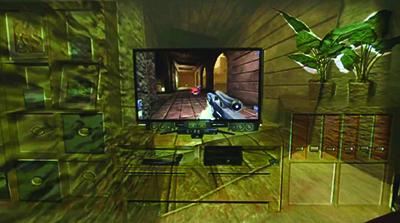
TOM BUTTS
EDITOR-IN-CHIEF
tbutts@nbmedia.com UHDTV led the way at CES last month but will consumers follow?
The consumer electronics industry has latched onto the next generation of high-definition television, otherwise known as “Ultra HD” in a big way, as evidenced by the plethora of displays launched at the show. But unlike its sad, forsaken cousin, 3DTV, the odds of its success are far more certain, although the timeline of its adoption is not.
As with many “next big things” that emerge from the annual Vegas event, there are some knowns and some unknowns. Let’s get a few facts out of the way first.
As with the transition to HDTV, prices will plummet as adoption increases and production efficiencies improve. Despite the increased interest in alternative entertainment and information platforms, including tablets and smartphones, nothing will replace the big screen experience; its survival in the future of the American living room is certain. Content will quickly become more ubiquitous. The pace of technological change in the development of acquisition and editing tools is accelerating and with the anticipated adoption of the HEVC H.265 compression standard this year, the industry is putting the building blocks for an ultra HD future into place. And even 3DTV, although currently floundering and on the outs with most consumers, will benefit from the increased resolution and could even enjoy a revival.
The big unknown, of course, is how UHDTV content will be delivered. The current Blu-ray standard does not allow for the massive increase in data required for UHD content, and cable, satellite, fiber and broadcast infrastructures could be years away from becoming a common source of content. An intermediary “upconversion” stage (which will probably always exist), will be required. Nevertheless, there is some movement on that front with last month’s announcement of Europe’s first launch of a dedicated UHDTV channel via Eutelsat (based on MPEG-4 and expected to be used for demonstration purposes mostly). Japan’s NHK has announced that it will begin broadcasting UHDTV by 2016 and the format could also be a part of the ATSC 3.0 initiative now underway and expected to be completed in a few years.

Microsoft’s wall-size Illumiroom could make even UHDTV passé. Another unknown is how quickly consumers will take to the format. There is an increasing emphasis on delivery of 1080p content, although right now it’s mostly available only via premium movie services via satellite and Blu-ray. Is 1080p “enough” or will we skip that generation? How much of a factor will the gaming community be in the rate of adoption? And displays are not just about one big picture anymore—4K means more data, with the potential for viewing multiple programs at once, zooming and improved overall manipulation of images. We’ve already reported on how broadcasters are using 4K to isolate and manipulate images in higher resolution. UHDTV could bring this control to the home viewer.
Parallels to the rollout of the first HDTV sets 15 years ago are not entirely accurate. Back then, there was a concerted interindustry effort to put the infrastructure in place to produce and deliver HD content by the time the sets became available. Satellite, broadcast and cable were all transmitting some HD content by 1999. And then there was a little thing called the “DTV transition” which helped prime the pump.
The professional video industry's #1 source for news, trends and product and tech information. Sign up below.
One known that we’re learned from the transition to HDTV was that although consumers may be wowed by the picture quality and features in the stores, that attitude sometimes turns to “ho-hum” once they bring the sets home. The unknown is how or if UHDTV will change all that.
* * *
4K UHDTV is here and now but 8K UHDTV is not far behind. Samsung demonstrated 8K at CES for the second year in a row and HD pioneer NHK will be bringing the format to the NAB Show in April. But another item crossed my desk during the show that was even more intriguing.
As part of a research project to promote the next generation of its Xbox platform, Microsoft revealed the “Illumiroom” which basically projects images to turn an entire wall into a display. Although consumers have been able to do this since the invention of the projector and the Illumiroom’s picture quality was a bit crude, resolution will of course, improve. Considering the speed at which companies are rolling out products these days, could we see these wall TVs at CES within a year or two?
Tom has covered the broadcast technology market for the past 25 years, including three years handling member communications for the National Association of Broadcasters followed by a year as editor of Video Technology News and DTV Business executive newsletters for Phillips Publishing. In 1999 he launched digitalbroadcasting.com for internet B2B portal Verticalnet. He is also a charter member of the CTA's Academy of Digital TV Pioneers. Since 2001, he has been editor-in-chief of TV Tech (www.tvtech.com), the leading source of news and information on broadcast and related media technology and is a frequent contributor and moderator to the brand’s Tech Leadership events.

